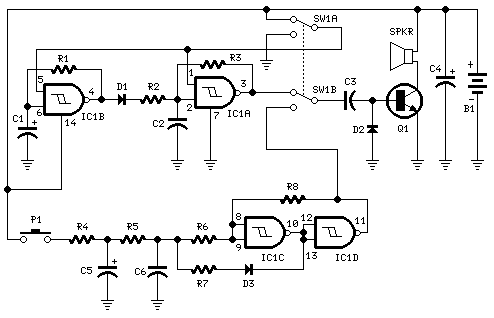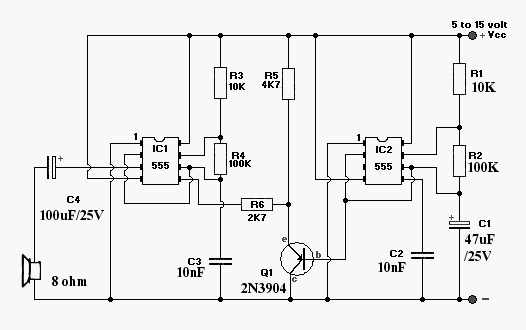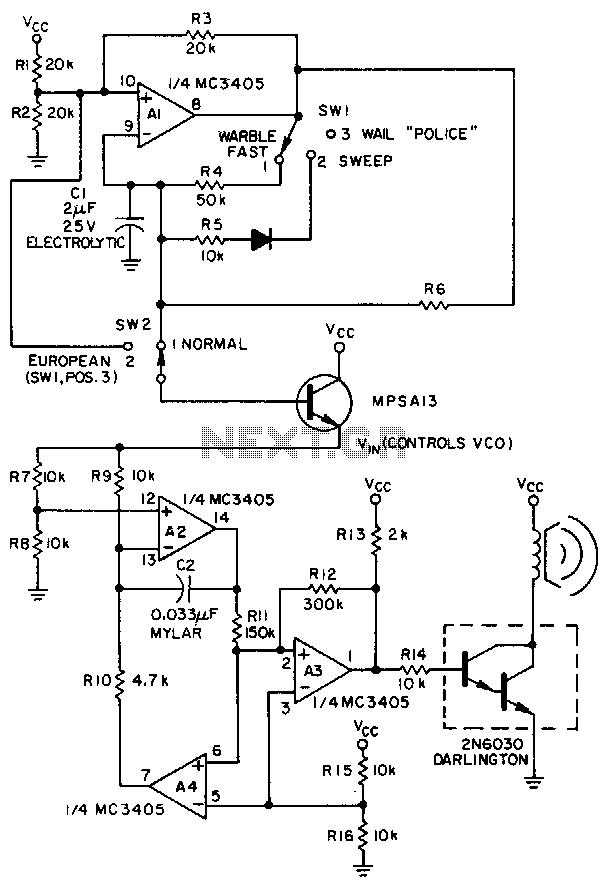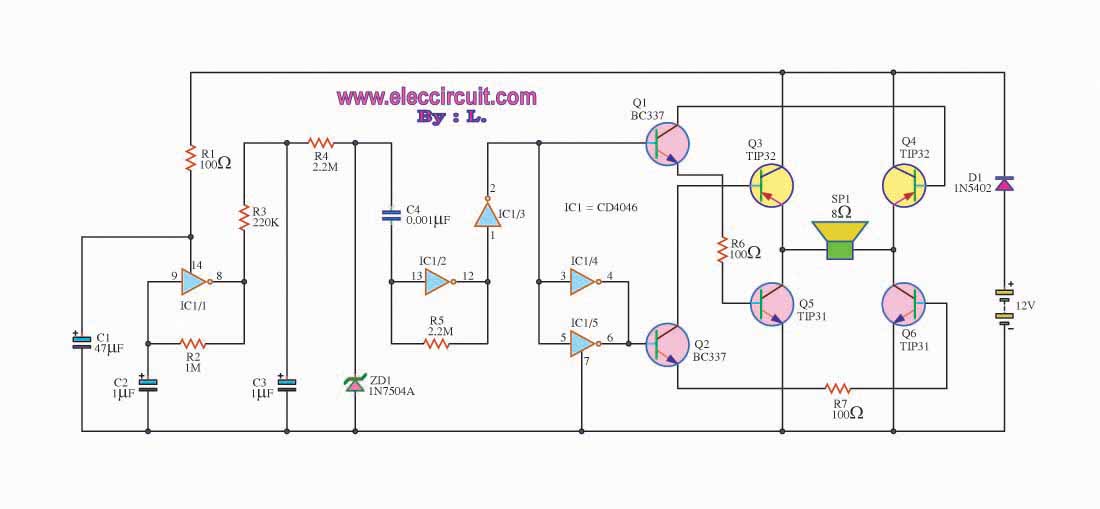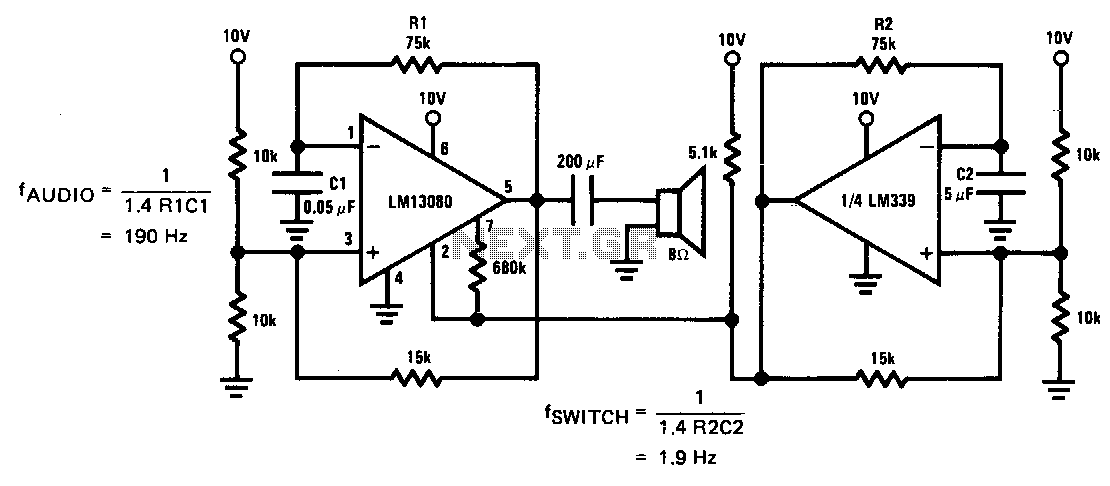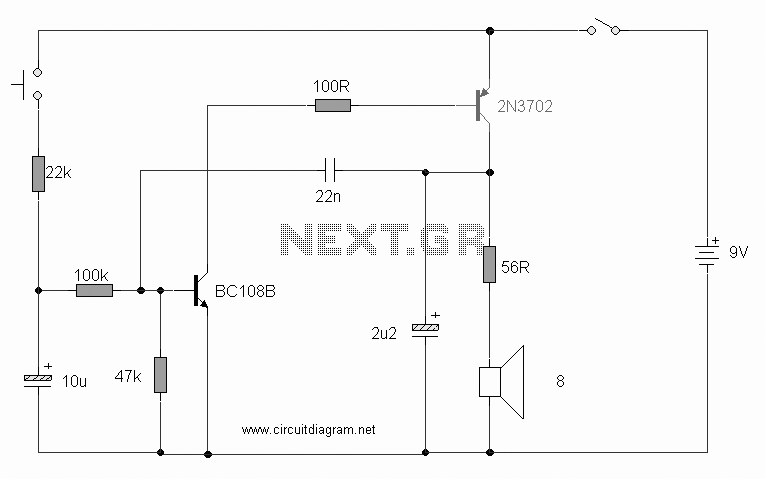
Msp430c112 Irda Sir Encoder/decoder
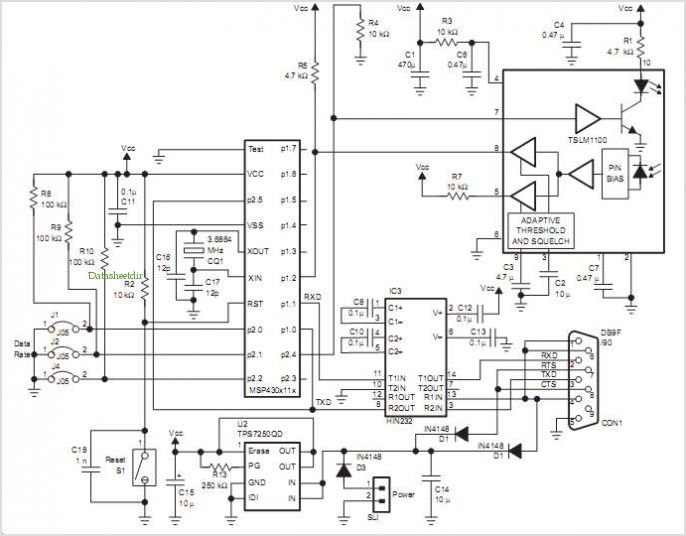
The MT8870 is a complete DTMF receiver that integrates both the band-split filter and digital decoder functions. The filter section employs switched capacitor techniques for high and low group filters, while the decoder utilizes digital counting methods to detect and decode all 16 DTMF tone pairs into a 4-bit code. The design minimizes the external component count by including a differential input amplifier, a clock oscillator, and a latched three-state bus interface.
The MT8870 DTMF receiver is designed for efficient decoding of Dual-Tone Multi-Frequency (DTMF) signals, commonly used in telephone systems for tone dialing. The receiver operates by first filtering incoming audio signals through its integrated band-split filters, which separate the high and low frequency components of the DTMF tones. This is achieved using advanced switched capacitor techniques, which provide high accuracy and reliability in tone detection.
Once the signals are filtered, the decoder section of the MT8870 employs digital counting techniques to analyze the filtered signals. This process involves detecting the specific tone pairs associated with each DTMF key and converting them into a corresponding 4-bit binary code. The receiver can identify all 16 DTMF combinations, ensuring comprehensive coverage for standard telephone dialing.
The MT8870 also features a differential input amplifier, which enhances the receiver's ability to process weak signals and minimizes the effects of noise, thereby improving overall performance. Additionally, the inclusion of a clock oscillator ensures precise timing for the decoding process, while the latched three-state bus interface facilitates easy communication with microcontrollers or other digital systems, allowing for seamless integration into larger electronic designs.
Overall, the MT8870 represents a highly efficient solution for applications requiring DTMF tone detection and decoding, with a focus on minimizing external components and enhancing signal integrity. This makes it suitable for various telecommunications and control systems where reliable tone recognition is essential.The MT8870 is a complete DTMF receiver integrating both the bandsplit Filter and digital decoder functions. The Filter section uses switched capacitor techniques for high and low group filters; the decoder uses digital counting techniques to detect and decode all 16 DTMF tone-pairs into a 4-bit code.
External component count is minimized by on chi p provision of a differential input Amplifier Clock Oscillator and latched three-state bus Interface 🔗 External reference
The MT8870 DTMF receiver is designed for efficient decoding of Dual-Tone Multi-Frequency (DTMF) signals, commonly used in telephone systems for tone dialing. The receiver operates by first filtering incoming audio signals through its integrated band-split filters, which separate the high and low frequency components of the DTMF tones. This is achieved using advanced switched capacitor techniques, which provide high accuracy and reliability in tone detection.
Once the signals are filtered, the decoder section of the MT8870 employs digital counting techniques to analyze the filtered signals. This process involves detecting the specific tone pairs associated with each DTMF key and converting them into a corresponding 4-bit binary code. The receiver can identify all 16 DTMF combinations, ensuring comprehensive coverage for standard telephone dialing.
The MT8870 also features a differential input amplifier, which enhances the receiver's ability to process weak signals and minimizes the effects of noise, thereby improving overall performance. Additionally, the inclusion of a clock oscillator ensures precise timing for the decoding process, while the latched three-state bus interface facilitates easy communication with microcontrollers or other digital systems, allowing for seamless integration into larger electronic designs.
Overall, the MT8870 represents a highly efficient solution for applications requiring DTMF tone detection and decoding, with a focus on minimizing external components and enhancing signal integrity. This makes it suitable for various telecommunications and control systems where reliable tone recognition is essential.The MT8870 is a complete DTMF receiver integrating both the bandsplit Filter and digital decoder functions. The Filter section uses switched capacitor techniques for high and low group filters; the decoder uses digital counting techniques to detect and decode all 16 DTMF tone-pairs into a 4-bit code.
External component count is minimized by on chi p provision of a differential input Amplifier Clock Oscillator and latched three-state bus Interface 🔗 External reference
